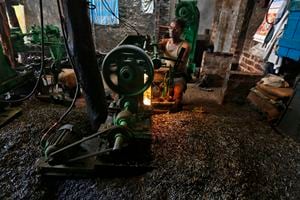India’s economic growth will decelerate marginally to 7.4% in FY17 from 7.6% in FY16, mainly due to a slowdown in public investment, stressed corporate balance sheets and declining exports, the Asian Development Bank (ADB) said in a new report on Wednesday.
In December 2015, the multilateral agency had said India’s economy would grow at 7.4% in the current fiscal and 7.8% in the next.
In its latest Asian Development Outlook 2016, ADB broadly agreed to the Central Statistics Office’s projection of 7.6% growth for the current fiscal, but it said the estimate is “a tad” optimistic.
To achieve the projected growth, India’s economy needs to grow by 7.7% in the January-March quarter of FY16.
The government’s Economic Survey in February has predicted a broad range of 7-7.75% for FY17 GDP growth.
The ADB projected India’s GDP growth to reach 7.8% in FY18 as strengthened public sector banks and corporate deleveraging would result in an uptick in bank credit and boost private investment, including on infrastructure.
While India has seen an improvement in its macro stability due to a much lower inflation, current account deficit (CAD) and fiscal deficit, in the current fiscal — partly helped by benign commodity prices — it continues to face risks on account of fragile global environment, uncertain monsoon, overvalued exchange rate against many currencies and fractured balance sheets of corporates and banks.
Continued weakness in exports combined with an increase in imports would push up India’s CAD to 1.6% in FY17 and to 1.8% in FY18, up from 1.3% in FY16. However, it said the CAD would be comfortably financed by stable capital flows.
“The potential growth of the country can be raised further if it can successfully implement necessary reforms, including unifying the tax regime (GST), improving labour market regulations, as well as opening further to foreign direct investment and trade,” said Shang-Jin Wei, ADB’s chief economist.



